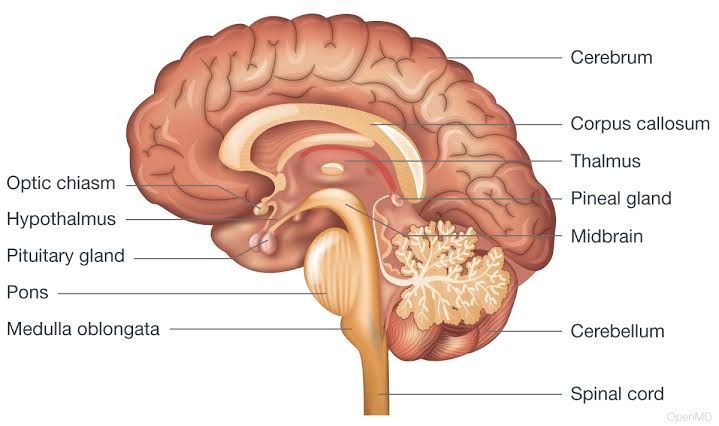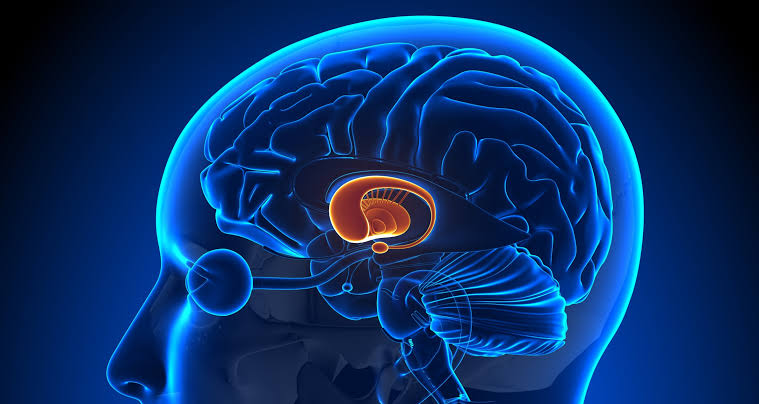
Basic Divisions of the Nervous System
The nervous system is primarily divided into two main parts:
- Central Nervous System (CNS): This includes the brain and spinal cord, which are responsible for processing information and coordinating activity throughout the body.
- Peripheral Nervous System (PNS): This consists of all the nerves that branch out from the CNS to the rest of the body, including sensory and motor neurons.
Components of CNS and PNS
Central Nervous System (CNS)
- Brain: The control center of the body, responsible for processing sensory information, regulating bodily functions, and enabling cognition, emotions, and memory.
- Spinal Cord: A long bundle of nerves that runs down the back, transmitting signals between the brain and the rest of the body. It also coordinates reflexes.
Peripheral Nervous System (PNS)
- Sensory Neurons: These carry signals from sensory receptors to the CNS.
- Motor Neurons: These transmit signals from the CNS to muscles or glands.
- Autonomic Nervous System (ANS): A subdivision of PNS that controls involuntary bodily functions such as heart rate and digestion. It is further divided into:
- Sympathetic Nervous System: Prepares the body for ‘fight or flight’ responses.
- Parasympathetic Nervous System: Promotes ‘rest and digest’ activities.
Structure of Neuron
A neuron is composed of several key parts:
- Cell Body (Soma): Contains the nucleus and organelles; it integrates incoming signals.
- Dendrites: Branched extensions that receive signals from other neurons or sensory receptors.
- Axon: A long projection that transmits electrical impulses away from the cell body to other neurons or muscles.
- Axon Terminals: The endpoints of an axon where neurotransmitters are released to communicate with other cells.
- Myelin Sheath: A fatty layer that insulates axons in many neurons, speeding up signal transmission.
Classification of Neurons
Based on Number of Processes
- Unipolar Neurons: Have a single process extending from the cell body; typically found in sensory neurons.
- Bipolar Neurons: Have two processes (one dendrite and one axon); commonly found in sensory organs like the retina.
- Multipolar Neurons: Have multiple processes (one axon and many dendrites); most common type in the CNS.
Based on Length of Fibers
- Golgi Type I Neurons (Long Axons): These have long axons that can extend over considerable distances within the body; often involved in motor functions.
- Golgi Type II Neurons (Short Axons): These have short axons and are typically involved in local circuit functions within a specific area.
Definition of a Nerve and Its Coverings
A nerve is defined as a bundle of axons located outside the CNS that transmits electrical impulses between different parts of the body.
Coverings of Nerves:
- Endoneurium: A delicate layer surrounding each individual nerve fiber (axon).
- Perineurium: A protective sheath surrounding a group of fibers, forming a fascicle.
- Epineurium: The outermost layer encasing all fascicles together to form a complete nerve.
Myelinated vs Unmyelinated Fibers
- Myelinated Fibers:
- Have myelin sheaths formed by oligodendrocytes in CNS or Schwann cells in PNS.
- Allow faster conduction speeds due to saltatory conduction where impulses jump between nodes of Ranvier.
- Unmyelinated Fibers:
- Lack myelin sheaths; they conduct impulses more slowly than myelinated fibers because they do not have saltatory conduction mechanisms.
Types of Neuroglia and Their Functions
Neuroglia are supportive cells in the nervous system with various types:
- Astrocytes:
- Provide structural support, regulate blood flow, maintain ion balance, and contribute to blood-brain barrier formation.
- Oligodendrocytes:
- Form myelin sheaths around CNS axons, facilitating faster signal transmission.
- Microglia:
- Act as immune cells within CNS; they remove debris through phagocytosis and respond to injury or disease.
- Ependymal Cells:
- Line ventricles in brain and central canal in spinal cord; involved in producing cerebrospinal fluid (CSF).
- Schwann Cells:
- Form myelin sheaths around peripheral nerves; play a role in nerve regeneration after injury.
- Satellite Cells:
- Surround neuron cell bodies within ganglia; provide support and regulate nutrient exchange.







